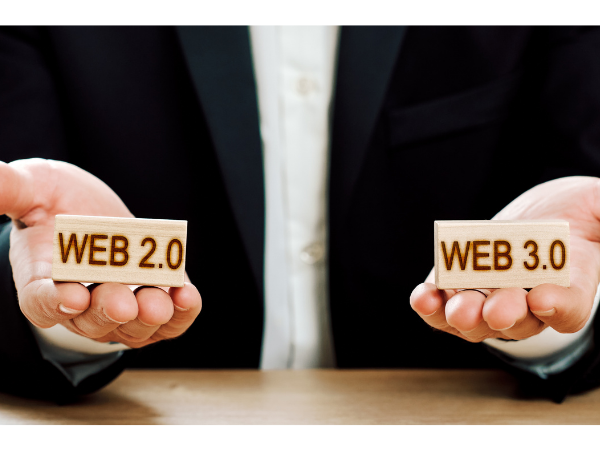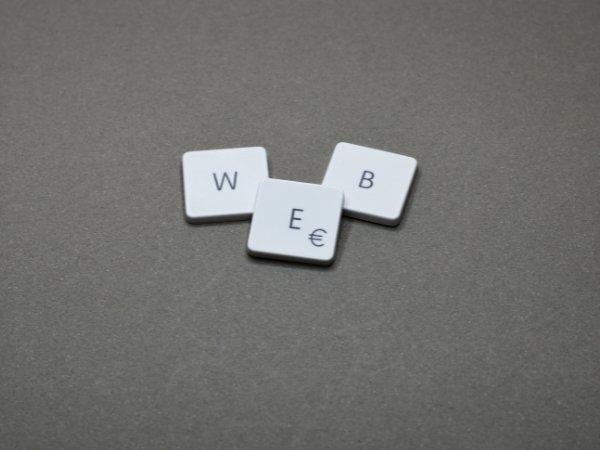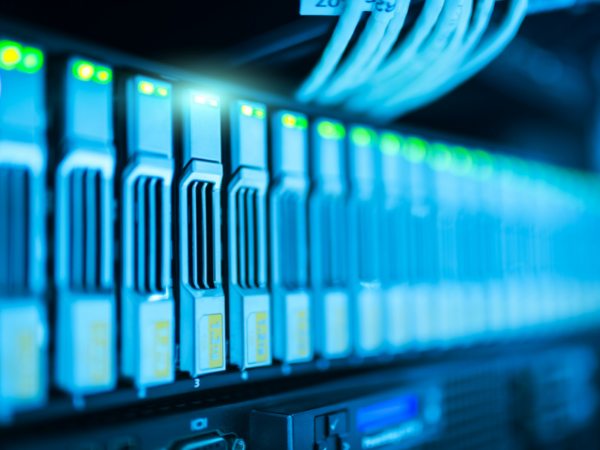How Web 3.0 will change the internet (and everything else)!
If you’re the average internet user, you might not have heard of Web 3.0. You probably don’t even know that there has been a 1.0 and a 2.0! Still, it will come soon to change the internet and everything else as you know it!
We’ll dive deep into Web 3.0’s details, from its definition to its features. Then, we will elaborate on its predecessors: Web 1.0 and Web 2.0. Afterward, we will explain how the world will head to Web 3.0 and even beyond!
Nowadays, technology is changing every facet of our lives, from communication to information. However, this is just the beginning of even more innovations! See how the upcoming Web 3.0 era will change how we see and perhaps even feel the internet!
What is Web 3.0 or “The Semantic Web”?

You might be thinking that Web 3.0 is a definite upgrade. Like there’s an individual or organization that’s trying to improve the internet in this way.
However, Web 3.0 is just a way to describe the future of the internet. It’s a set of features that the current one will gain in the coming years. Let’s take mobile phones as an example.
Before smartphones, we had clunky cellular phones. It can’t even store photos, play videos, or connect to the internet! You can only send text messages or start phone calls with them.
With the rise of other technologies, we saw the features we may see in future phones. As we got colored TVs, we eventually got rid of the monochrome displays in iPhones.
We may describe Web 3.0 as the likely next step for the internet. It is a set of features it may have in the future. Who even came up with the idea anyway?
It’s none other than the founder of the World Wide Web (WWW) himself, Tim Berners-Lee. Here is how he defined Web 3.0:
“People keep asking what Web 3.0 is. I think maybe when you’ve got an overlay of scalable vector graphics – everything rippling and folding and looking misty – on Web 2.0 and access to a semantic Web integrated across a huge space of data, you’ll have access to an incredible data resource…”.
What are the features of Web 3.0?
This new generation of the internet will bring us open, trustless, and permissionless networks. Let’s look at each description in detail:
- Open – Our online networks will come from open-source software. An open and accessible community will create it. What’s more, the software will be executed while everyone worldwide can see it.
- Trustless – The networks will allow users to interact publicly or privately. What’s more, they wouldn’t need a big company or government overseeing everything.
- Permissionless – Everyone can just go in and join. You won’t have to meet requirements from a person or group.
In Berners-Lee’s vision, the new online networks will work with one another. Five features will make this possible. Let’s look deeper into their details below::
- Semantic Web – This is a word coined by Tim Berners-Lee. It improves web technologies by enhancing how users create, share, and connect content. Machine learning will also enable it to detect patterns in content. You already see an early version of it in search engines.
- Artificial intelligence – In this new internet, computers can pick apart information just like humans do. AI technology and natural language processing will allow them to give people more relevant and more reasonable results. In other words, they’ll become smart enough to meet user needs fully.
- 3D graphics – The internet of the future will use three-dimensional graphics. Examples include computer games and even museum guides.
- Connectivity – All the information is connected. This allows devices and services to use the same data. Your search engine serves as an example. You share search terms with millions of people, and you all get similar results.
- Ubiquity – You already see it when you retweet or share content on online social networks. When you open your Facebook feed, you may find posts linking to Twitter.
As you’ve noticed, we already have some of these features. Spot the ones we discussed on our list. You’ll see how close we are to Web 3.0! We may see more in the future.
What is Web 1.0?
We mentioned that Web 3.0 is an upgrade. If that’s the case, there must be earlier versions. To understand why Web 3.0 is important, we must know about Web 1.0 and 2.0.
Web 1.0 is almost nothing like the internet we know today. The web pages don’t play videos or provide live chat. Instead, they’re mostly just walls of text. Here are its other features:
- Websites didn’t change – They look like your typical school paper typed on Microsoft Word. They have the information you need, but that’s it.
- You can’t do anything to the websites – Even the drabbest website has a search bar. The ones from Web 1.0 had nothing except for huge paragraphs.
- Web 1.0 apps were proprietary – People could download software from the internet even in those times. However, they only worked for a certain company’s services. Users couldn’t see how the app worked or change it either.
Look at these features, and you’ll see why people doubted the internet would become popular. It looked so boring back then! Yet, this didn’t stop some people from improving the internet.
What is Web 2.0?
Websites gained more features over the years. Little by little, we reached Web 2.0. It’s also called the “Social Web” or the “Social Internet.” It doesn’t involve technical changes, though.
Instead, it changed the way people design and use websites. Specifically, Web 2.0 was the time when web pages started to interact with each other.
We saw more user-generated content in this upgrade. For example, people could share music via Limewire and other programs. Unlike Spotify, you have to watch out for viruses, though!
This was also the time when social media started. For the first time, people were able to post content on websites. Then, they could comment and share those posts.
Just like today, nearly everyone has a smartphone. We could open the same websites. Even better, they had graphics! No more walls of text using just one font style!
What are the features of Web 2.0?
Let’s dive deeper into Web 2.0. Later, we’ll see what makes Web 3.0 much better than 1.0 and 2.0. For now, let’s take a closer look into Web 2.0:
- Owner-user communication – A website’s owner could communicate with users via online comments. These people may also talk to the owner by posting reviews.
- Designed for the masses – The internet wasn’t just for a few people anymore. Web 2.0 was when the internet became more interesting for regular people. It contained content they made by themselves.
- Dynamic Web – The internet lets us buy goods and services nowadays. For example, our mobile devices have super apps for buying groceries and booking cab rides.
- Profitable Web – Making money on the internet has never been this easy! For example, you may become an Amazon seller. You may work from home in various ways. You can now start your food business as a ghost kitchen instead of a brick-and-mortar restaurant
- Data-driven Web – Web 2.0 lets us use digital business models. You may adjust your website for SEO, so it gets more traffic. In turn, more people get to know your brand. Even better, you could get a great digital marketing agency to do it for you.
How does Web 3.0 compare with 1.0 and 2.0?
Two things will set apart Web 3.0 from the former versions of the internet. These are cross-platform access and decentralization. Let’s start discussing the former.
In Web 1.0, you only had computers accessing the internet. Then Web 2.0 allowed us to do it on our smartphones and other devices. However, some are exclusive to certain devices.
Let’s take a Nintendo Switch and an Xbox One X as examples. They both have marketplaces where you can buy and download games.
However, you can’t download Switch games to your Xbox or the other way around. With Web 3.0, your device can access all the content, no matter the format.
Next, Web 3.0 will become decentralized. Do you know what else is decentralized? Why it’s the blockchain, of course! Cryptocurrency may help in bringing Web 3.0.
If you don’t know, it’s a peer to peer digital money that doesn’t rely on banks or governments. It already has the qualities that Web 3.0 needs!
It’s a big deal because it may give the internet back to the people. Right now, a handful of companies hold so much power over the internet.
It may run on its own using blockchain. Once that happens, we would be free to use the internet: no more paying fees or following rules from big tech firms.
How will Web 3.0 help me?
Now is our moment to make this happen. Join me, @rosemaryleith and the @webfoundation, and together let’s make the web truly worldwide. https://t.co/Tm57lC0FbY
— Tim Berners-Lee (@timberners_lee) June 2, 2021
The most important question right now is, “How will all this help me?”. We could throw out all the fancy terms. No matter what, it should be useful. Here’s how everyone will benefit from Web 3.0:
- More personal experience – Online ads are meant to fit your needs. Yet, they often don’t show what you truly want. Web 3.0 will be better at knowing our habits. Soon, it will show products you need, not the ones a company wants to sell!
- Better search – Siri, Cortana, and Alexa are all nifty voice command assistants. They still have trouble understanding what we say and mean, though. Web 3.0 may let us request things from our devices as if it’s a regular person. It may even think like a person too!
- Better apps – Let’s take Google Maps as an example. It gives a rich user experience by giving us map directions and live traffic updates. This will just improve as Web 3.0 gets better.
Final thoughts
Web 3.0 isn’t even the last upgrade! Still, we might see these features in the future! Some people are floating ideas about Web 4.0 and 5.0 right now. They seem closer to sci-fi, though.
Blockchain and cryptos are a major part of Web 3.0. It’s coming no matter what. In response, you must learn all you can about it. This will help you adopt it in your daily life.
You may start by reading other crypto articles on Inquirer USA. These will show you the latest in this type of tech. Of course, you should check other online sources.
Learn more about Web 3.0
What is Web 3.0 also known as?
It’s also known as the “Semantic Web.” It’s when our devices can understand the meaning behind human words and speech. In turn, we could get a better browsing experience.
Does Web 3.0 already exist in 2020?
We’re not there yet. While we have plenty of its features, they aren’t advanced enough. We may see more improvements after several years. Then, we may finally get Web 3.0.
Why is Web 3.0 useful?
It will help the internet serve our needs better. Once it can understand what we mean, it could suggest products and services that truly suit us.
Disclaimer: This article is not the official guide to the web 3.0 process but is based on the author’s research or own personal experience.






